How Sunflowers Energize Calls for Peace Throughout History
By Jill Brooke
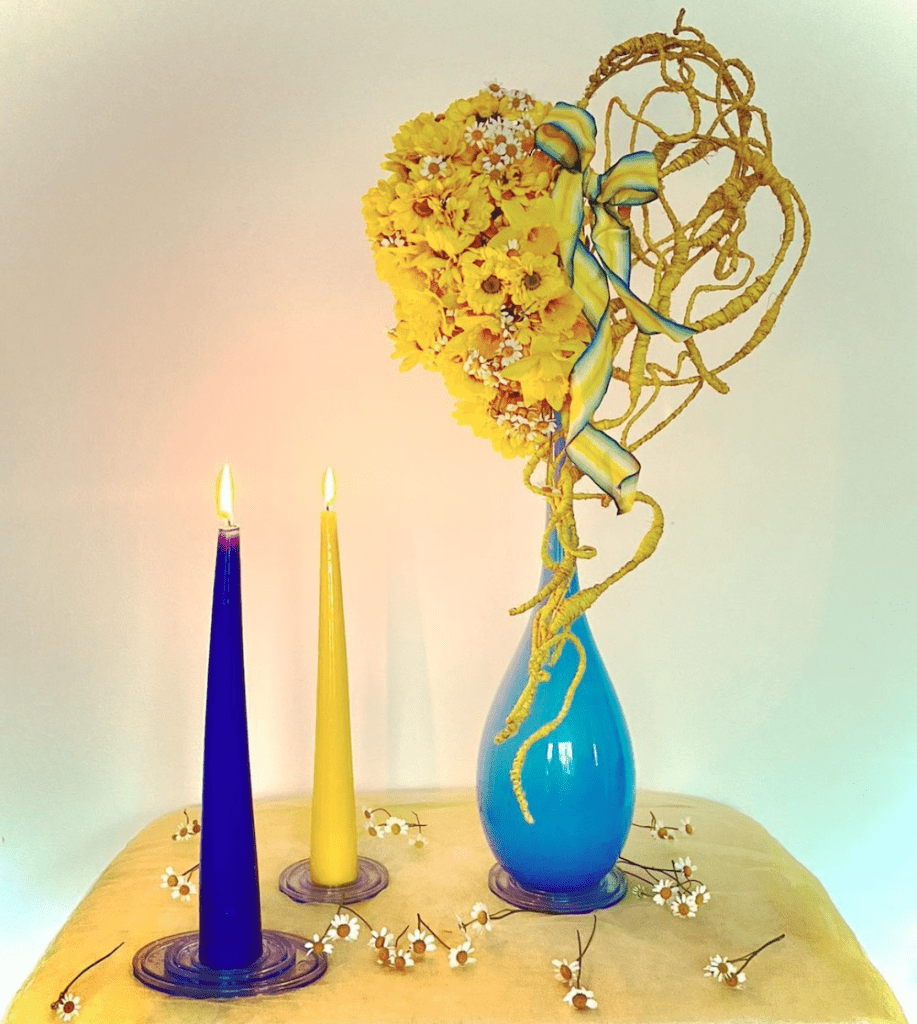
Flower lovers and florists around the world are using hashtags such as #flowersforpeace to raise funds, awareness and support for the Ukrainian people in this David and Goliath story now unfolding.
It is not only the sunflower, the national flower of Ukraine, that is sparking this support and a barrage of images on the internet, but also interpretations of blue and yellow which are the colors of the Ukrainian flag.
For our friend Ukrainian-born Olena Tcaci, who runs Dandelion Floral Art near Chicago, “I have never been so proud of my courageous people.”
She created this image in support of her native country and is creating more.

In Amsterdam, Natasja Sadi coincidentally had planned a visit this week to the Anne Frank museum with her young children where discussions about injustice and aggression now are being felt deeply.
“How do you explain war to your children? For the second time in one week, we had to explain evil,” she recalls. “Flowers feel so futile at this moment in time when there is so much sadness and heartbreak. ” However, she created this arrangement of sunflowers for support of Ukraine and its “strength and bravery.”
At the studio of fLo rE sta in New York, award-winning florist Carlo Bermudez is priming 500 flowers to keep up with the demand for flowers that customers are requesting to support Ukraine. Although Dutch-born Vincent van Gogh is so associated with sunflowers, Bermudez notes that “hope for peace” and solidarity is being inspired through this beloved flower.
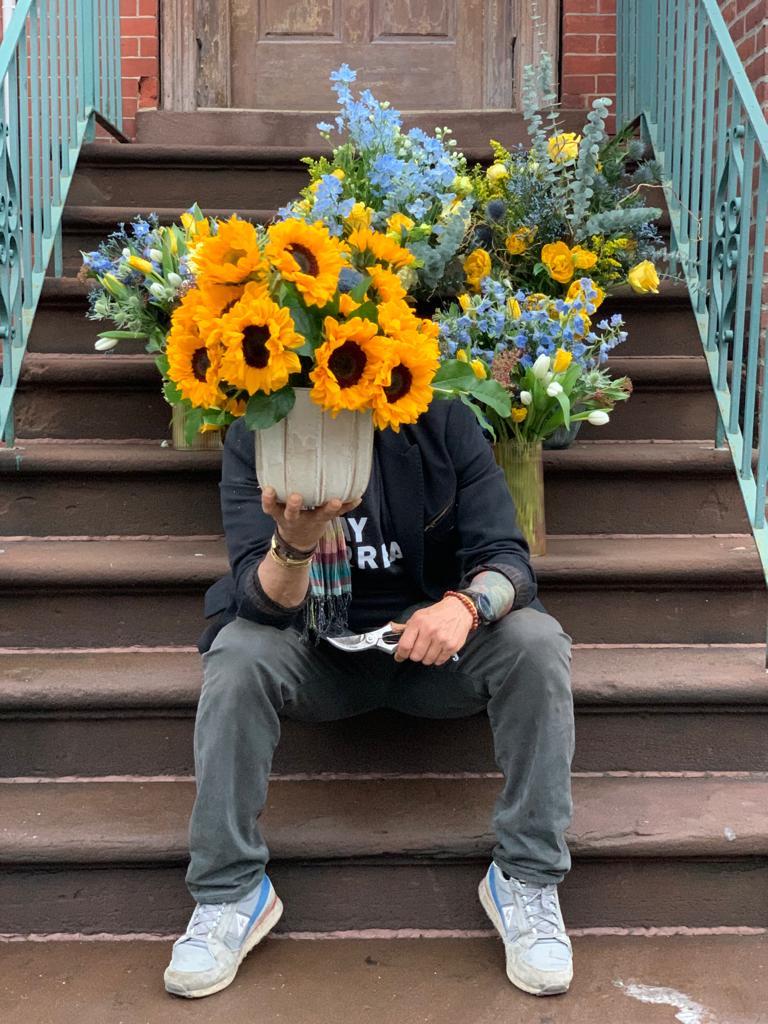
As Helen Mirren once said, “I don’t think there’s anything on this planet that more trumpets life than the sunflower. That’s because of the reason behind its name. Not because it looks like the sun but because it follows the sun. During the course of the day, the head tracks the journey of the sun across the sky. A satellite dish for sunshine. Wherever light is, no matter how weak, these flowers will find it. And that’s such an admirable thing. And such a lesson in life.”
Expect to see many more sunflower motifs being weaved into fabrics, wallpapers as well as flower arrangements. All these images collectively give us faith in humanity.
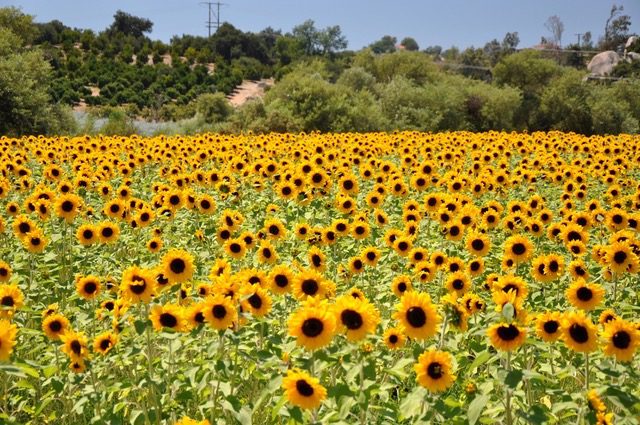
As Jason Levin, the president of California’s Dos Gringos Flower Farm, one of the largest ornamental sunflower growers in the world says, an increase in what he called the “happiness, peace and hope flower” is up over 40% in the past week. His team grows 275,000 flowers a week for supermarkets and clients around the United States and Canada. Levin, whose team harvests 70 million flowers annually, says this uptick is heartwarming since it’s in support of such a noble cause.
It does say something about a culture when their national flower is the sunflower. Ukraine is also the world’s largest producer and exporter of sunflower seeds and sunflower oil.
Turns out that because of the Orthodox Church restricting butter during lent, sunflower oil took off in the 1800s when the flower seeds were imported from North America, as did a love of this flower. Soon there were big fields of sunflowers all over Ukraine.
Explains Ukrainian resident Luba Rudenko, “You see sunflowers in the yards of village houses, they are woven into wreaths (venki) for girls to wear at celebrations. They’re embroidered on fabrics and painted on walls, wooden furniture, and household items in a folk art called petrykivka.”
This is how we are tied together through a flower. North America to Ukraine.
A lesser-known fact about sunflowers is that they are symbols of nuclear disarmament.
When the Soviet Union broke apart in 1991, the new nation of Ukraine held the third-largest arsenal of nuclear weapons. In 1996, Ukraine committed to total nuclear disarmament reflecting their character. To honor the occasion, representatives from the U.S., Ukraine, and Russia planted sunflowers in the locations where there had previously been nuclear missile silos.
Turns out that not only are sunflowers satellite dishes for optimism and happiness, but they also can absorb radioactive isotopes from the environment. In fact, sunflowers have been planted at both the Chernobyl and Fukushima nuclear disaster sites because they help to remove radioactive toxins from the environment.
In recent weeks, the sunflower has once again been a messenger for peace – as it often is – when a woman, confronted by a heavily-armed Russian soldier, offered him sunflower seeds — so that they might bloom when he dies. She was hailed as a hero.
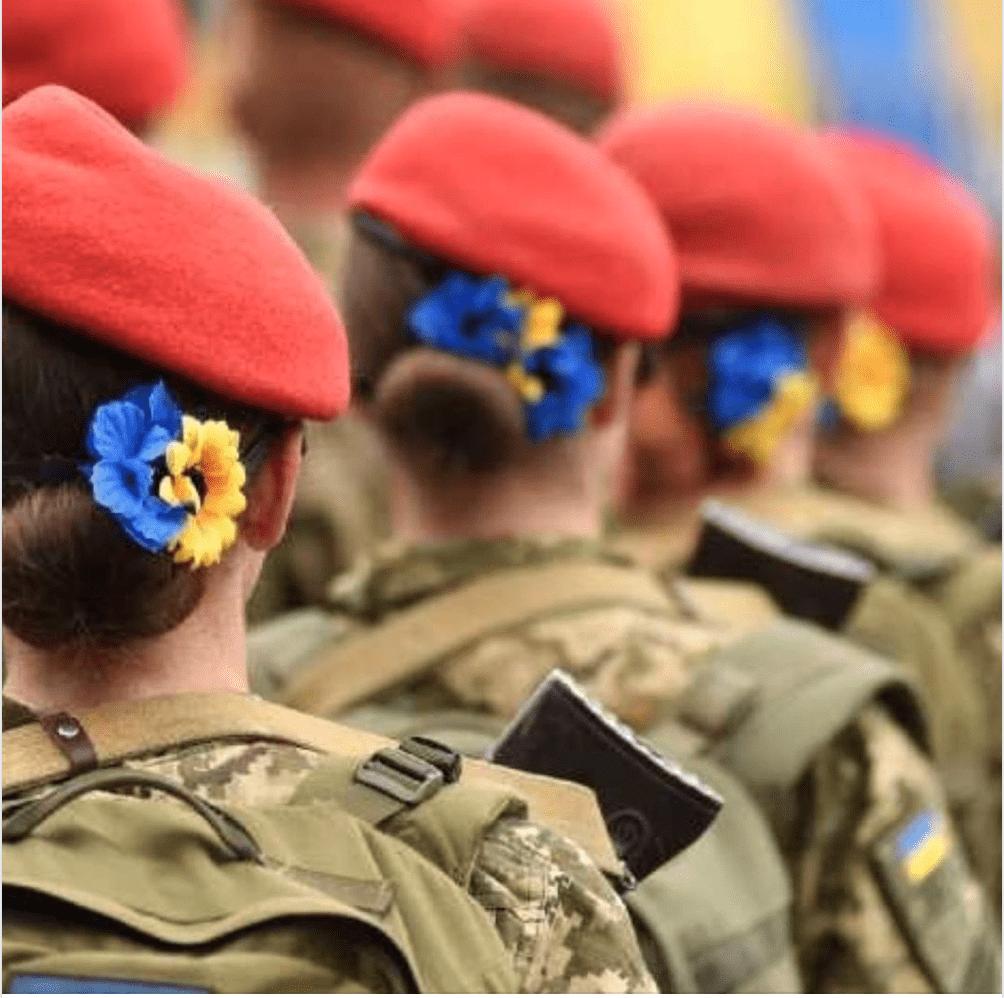
It is also a tradition that Ukrainian female soldiers wear a sunflower in their hair, paired with a blue flower, to represent the colors of the flag that have also been shared.
It is yet another example in history of how flowers are symbolic and relevant. A #flowersforpeace movement is taking place and rooting expansively.
When “Saturday Night Live” opened its show, there were sunflowers all over the set – showing in simple ways how the sunflower is now so associated with Ukraine. At the State of the Union address, First Lady Jill Biden also wore a sunflower embroidered motif on her sleeve as have many other bi-partisan supporters have worn pins or flags.
Veteran florists like Michael Grim and James Osborne of Bridgehampton Florists say that the sunflower being embraced for this cause is likely to have a long-lasting impact. “In the past, some clients have shied away from yellow flowers as being too strong,” observes Osborne. “But now that is looked at as a positive trait. We’ve always thought yellow conveyed sunshine and spring.”
Furthermore, as Grim recalled, yellow roses were a symbol of those fighting during the Vietnam War.
In fact, every year at the Vietnam Memorial for a Father’s Day remembrance since the 1990s, red roses are placed for those killed in action, yellow roses for those missing in action, and white with red-tipped one for those vets who died after the war from war-related causes.
And even the right for women to vote used yellow roses to support the hotly-debated legislation. In 1920, with Tennessee being a pivotal state to pass the 19th Amendment, anti-supporters wore red roses while the supporters wore yellow roses. This yellow color stood for purity and hope and became an emblem of the suffrage cause.
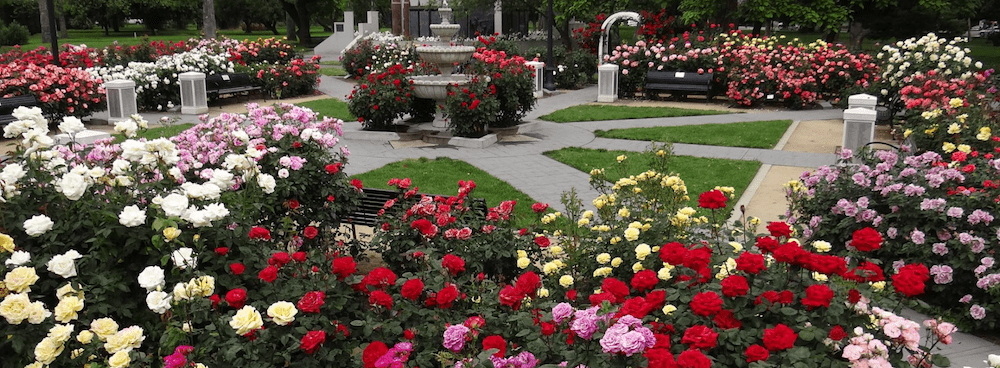
In 1965, Martin Luther King Jr and the Georgia congressman John Lewis marched from Selma to Montgomery, Alabama wearing Hawaiian leis to show their peaceful intentions in asking to stop arbitrary voting requirements that prevented black citizens from being able to register to vote.
According to a report by Eric Stinton, “the previous two marches were marred by violence: police officers and groups of marauding racists attacked and killed nonviolent protesters. By the third march, there was a national outcry to protect the activists, paving the way for the activists to complete the 54-mile march.” The Voting Rights Act became law less than five months after the Selma Marches. Today the Martin Luther King Jr World Peace Rose Garden teaches progress through non-violence.
It was also that year that the term “flower power” was also popularized by poet Allen Ginsberg and used to inspire anti-war demonstrators wanting peace and love vs. war. Flower power is still a force for good.
At the 2020 Tokyo Olympics, sunflowers were used in the bouquets to show resilience. Parents of children who died in the wake of the 2011 tsunami subsequently went to Miyagi to plant sunflowers in memory of the innocent lives lost. Sunflowers were planted in their memory even though the region is best known for roses. As we’ve reported, the darkness in the middle of the flower represents sadness and the bright yellow petals the possibility for happiness. Those sunflowers became the centerpieces of the athletes’ bouquets. A reminder of how flowers teach us not only resilience but that beauty and solace exist.
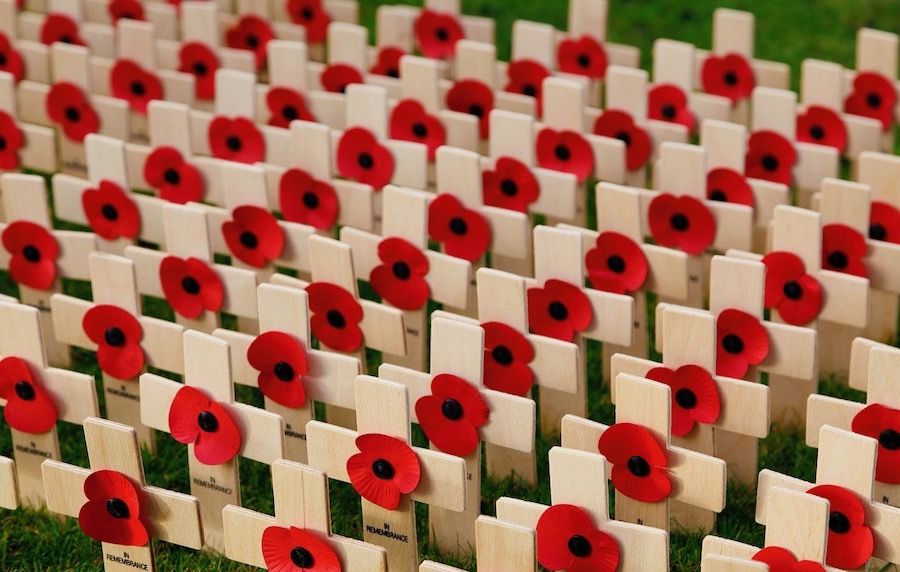
As we know, since ancient times, flowers have not only been a source of comfort but also quietly teach lessons about the cycles as well as the fragility of life. The poppy became a military symbol because after Napolean razed Europe, and so many had died without proper burials, red poppies grew mysteriously over the land giving people hope for the future. The same phenomenon happened during World War I which created the famous “In Flanders Fields” poem about the sadness but nobility of sacrifice for a greater good. It created further layering of the poppy’s symbolism and significance to become a military remembrance around the world.
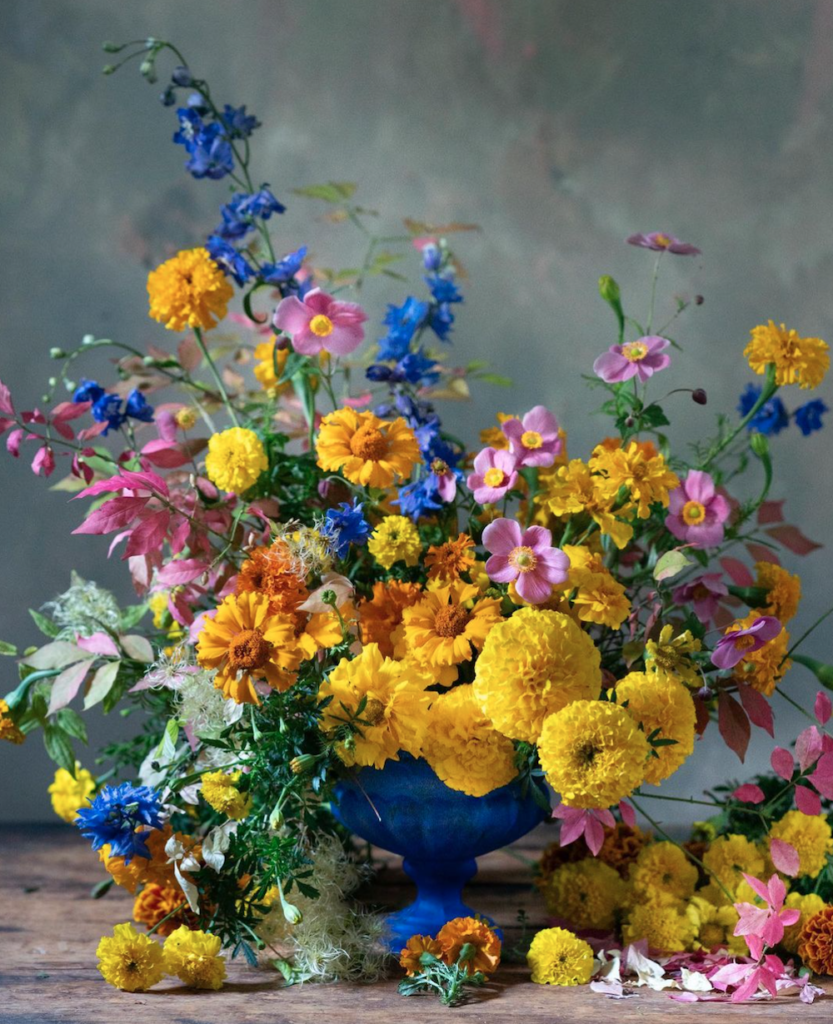
Now flowers with blue and yellow along with the sunflower will be symbols of hope, resilience, and appreciation for bravery of the Ukrainian people for generations to come.
Because as Theodore Roethke said, “Deep in their roots, all flowers keep the light.”
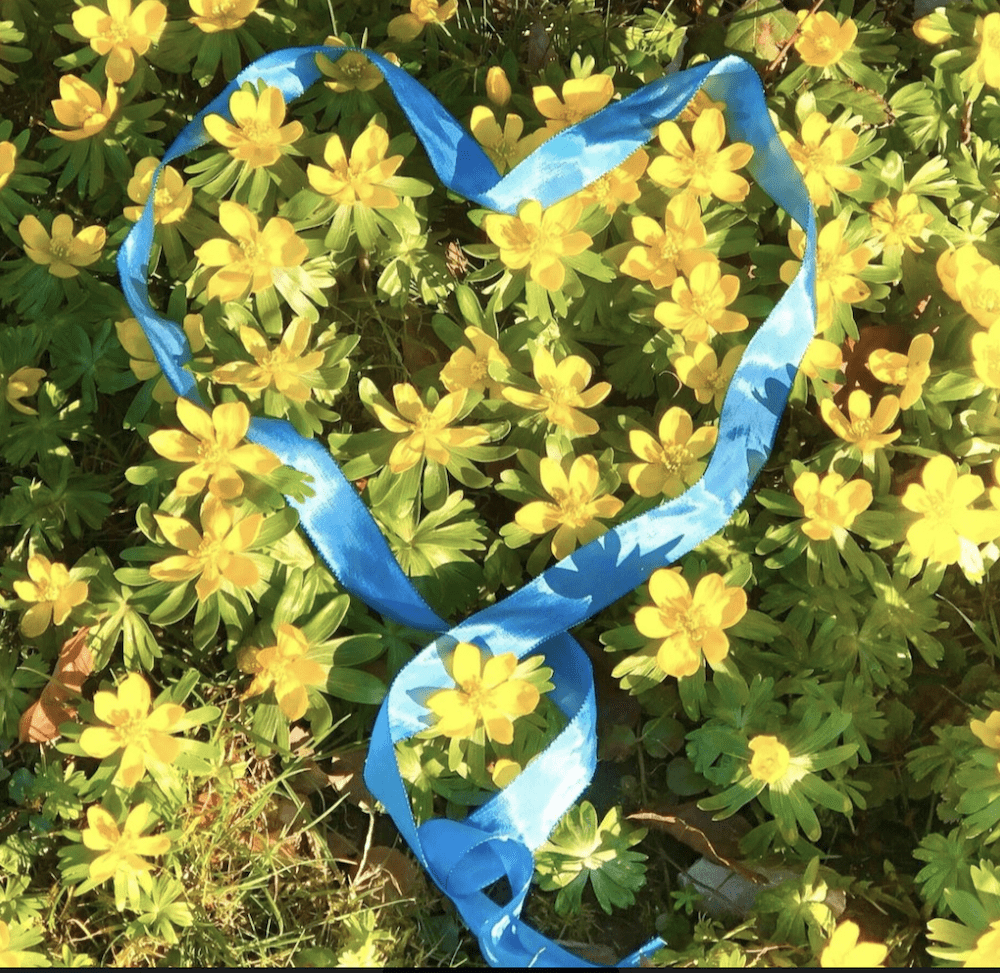
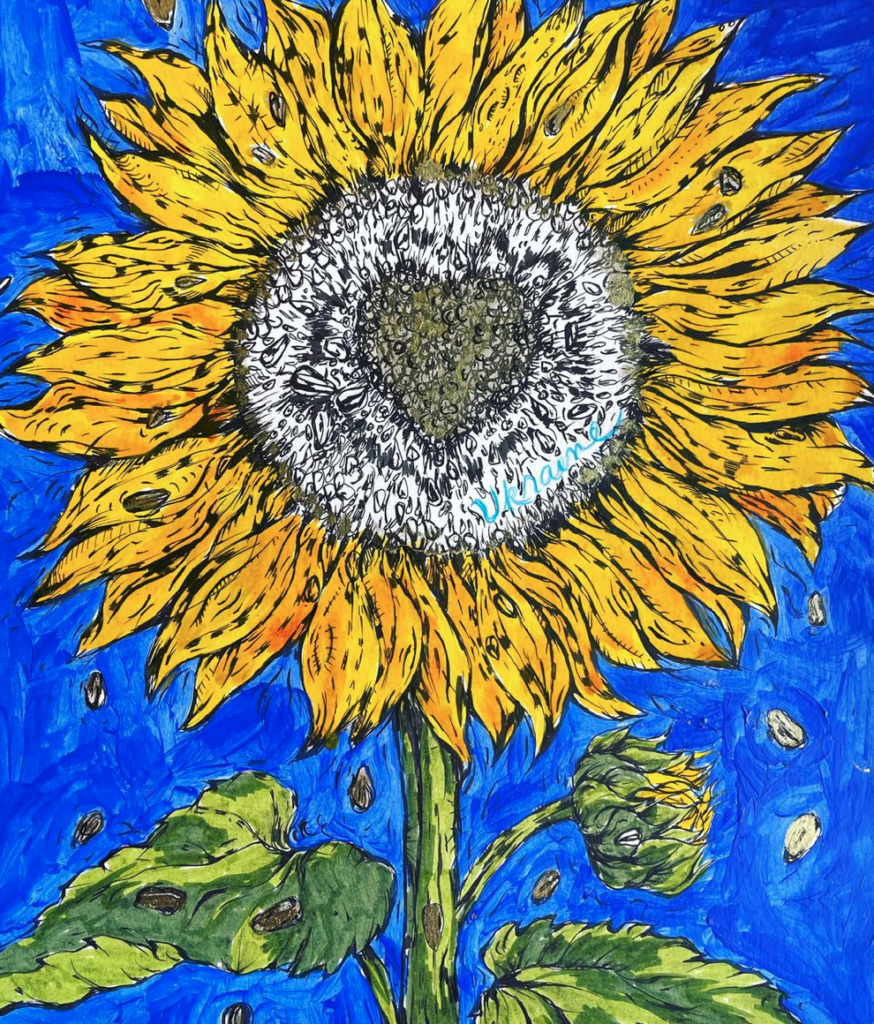
Jill Brooke is a former CNN correspondent, Post columnist and editor-in-chief of Avenue and Travel Savvy magazine. She is an author and the editorial director of FPD and floral editor for Aspire Design and Home magazine and contributor to Florists Review magazine.
